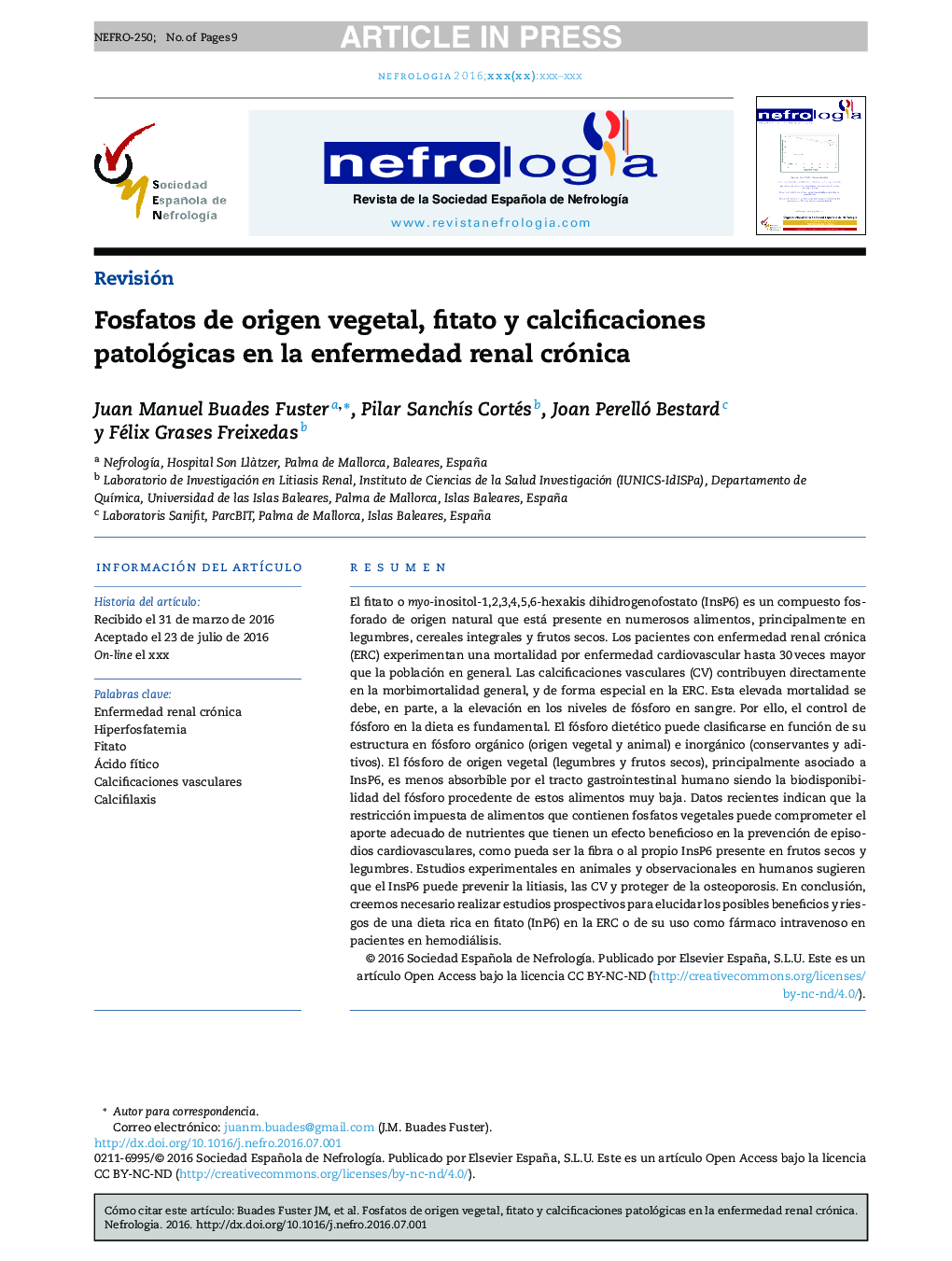| کد مقاله | کد نشریه | سال انتشار | مقاله انگلیسی | نسخه تمام متن |
|---|---|---|---|---|
| 8774850 | 1599208 | 2017 | 9 صفحه PDF | دانلود رایگان |
عنوان انگلیسی مقاله ISI
Fosfatos de origen vegetal, fitato y calcificaciones patológicas en la enfermedad renal crónica
ترجمه فارسی عنوان
فسفات های گیاهی، فیتات و کلسیفیکاس پاتولوژیک در بیماری مزمن کلیه
دانلود مقاله + سفارش ترجمه
دانلود مقاله ISI انگلیسی
رایگان برای ایرانیان
کلمات کلیدی
موضوعات مرتبط
علوم پزشکی و سلامت
پزشکی و دندانپزشکی
بیماریهای کلیوی
چکیده انگلیسی
Phytate, or myo-inositol 1,2,3,4,5,6-hexakis dihydrogen phosphate (InsP6), is a naturally occurring phosphorus compound that is present in many foods, mainly legumes, whole grains and nuts. Patients with chronic kidney disease (CKD) have cardiovascular disease mortality up to 30Â times higher than the general population. Vascular calcifications (VCs) directly contribute to overall morbidity and mortality, especially in CKD. In part, this high mortality is due to elevated levels of phosphorus in the blood. Therefore, control of dietary phosphorus is essential. Dietary phosphorus can be classified according to its structure in organic phosphorus (plant and animal) and inorganic (preservatives and additives). Plant-phosphorus (legumes and nuts), mainly associated with InsP6, is less absorbable by the human gastrointestinal tract as the bioavailability of phosphorous from plant-derived foods is very low. Recent data indicate that restriction of foods containing plant phosphates may compromise the adequate supply of nutrients that have a beneficial effect in preventing cardiovascular events, such as InsP6 or fibre found in legumes and nuts. Experimental studies in animals and observational studies in humans suggest that InsP6 can prevent lithiasis and VCs and protect from osteoporosis. In conclusion, we need prospective studies to elucidate the potential benefits and risks of phytate (InsP6) through the diet and as an intravenous drug in patients on haemodialysis.
ناشر
Database: Elsevier - ScienceDirect (ساینس دایرکت)
Journal: NefrologÃa - Volume 37, Issue 1, JanuaryâFebruary 2017, Pages 20-28
Journal: NefrologÃa - Volume 37, Issue 1, JanuaryâFebruary 2017, Pages 20-28
نویسندگان
Juan Manuel Buades Fuster, Pilar SanchÃs Cortés, Joan Perelló Bestard, Félix Grases Freixedas,
